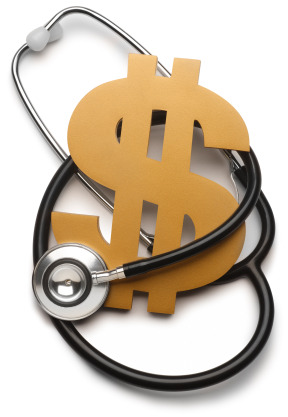In our third-party-payer health insurance system the price for care is typically set by entities outside the doctor-patient relationship. As a result, providers rarely compete for patients based on money prices. Potentially they can compete on the time price of care, on amenities, and on quality. Yet providers rarely compete on quality.
In those health care markets where third-party payment is nonexistent or relatively unimportant, providers almost always compete for patients based on price. And where there is price competition, transparency is almost never a problem. Not only are prices posted (as in walk-in clinics, surgi-centers, etc.), they are often package prices, covering all aspects of care (as with cosmetic surgery, Lasik surgery, etc.), and therefore easy for patients to understand.
Quality Competition
Wherever there is price competition, there also tends to be quality competition. In the market for Lasik surgery, for example, patients can choose traditional Lasik or more advanced custom Wavefront Lasik. Prices range from less than $1,000 to more than $3,000 per eye. In the international medical tourism market, some hospitals in India, Thailand, and Singapore disclose their infection, mortality, and readmission rates and compare them to such U.S. entities as the Cleveland Clinic and the Mayo Clinic.
Even when providers do not explicitly advertise their quality standards, price competition tends to force product standardization, and this reduced variance is often synonymous with quality improvement. Rx.com, for example, initiated the mail order pharmacy business, competing on price with local pharmacies by creating a national market for drugs.
Industry sources maintain mail-order pharmacies have fewer dispensing errors than conventional pharmacies. Walk-in clinics, staffed by nurses following computerized protocols, score better on quality metrics than traditional office-based care and have a much lower variance.
In general, medical services for cash-paying patients have popped up in numerous market niches—where third-party payment has left needs unmet. It is surprising how often they offer the very quality enhancements that critics complain are missing in traditional medical care. Electronic medical records and electronic prescribing, for example, are standard fare for walk-in clinics, concierge doctors, and telephone and e-mail consultation services, as well as medical tourist facilities in other countries. Twenty-four/seven primary care is also a feature of concierge medicine and the various telephone and e-mail consultation services.
Waiting Times and Amenities
Competition in the provision of amenities is also common in the niche markets. Cancer Treatment Centers of America accepts third-party payment, but its patients usually have to travel some distance to get to the CTCA facilities, at both inconvenience and expense. To attract them, CTCA goes to great lengths to ensure the comfort of its patients and facilitates the needs of accompanying family members, offering services similar to what medical tourist facilities offer in other countries. CTCA also posts its cancer survival rates.
In general, providers who compete on price are competing to lower the money price of care. Where this occurs, they tend to compete to lower the time price as well (hence the term “Minute Clinic”). Teladoc, for example, promotes its services by publishing the response times (a doctor’s return call) for its clients. Similarly, most concierge doctors promise same-day or next-day appointments. Some diagnostic testing services make the test results available to patients online within 24 to 48 hours.
In general, these markets do not appear to be fundamentally different from non-health care markets. Competition tends to produce more uniformity of fees and waiting times than would otherwise be the case. Similarly, quality competition tends to produce either uniform quality or a uniform trade-off between money prices and quality.
Reverse Medical Tourism
In the international health tourism market, quality is almost always a factor when people travel for their care. And when people travel for their care, cost often is also a factor—either because the patient is paying the entire bill out of pocket or because the patient and a third-party insurer have an arrangement that allows both to profit from the travel. Generally, price and quality competition tend to complement each other.
Is it possible to replicate this experience in the domestic hospital marketplace? Even without a major policy change, developments are underway. By one estimate 430,000 nonresidents a year enter the United States for medical care. Some Canadian firms are even able to obtain package prices for Canadians seeking medical care at U.S. hospitals.
Moreover, you do not have to be a foreigner to benefit from domestic medical tourism. North American Surgery, Inc. has negotiated deep discounts with 22 surgery centers, hospitals, and clinics across the United States as an alternative to foreign travel for low-cost surgeries. The “cash” price for a hip replacement in the network is $16,000 to $19,000, making it competitive with facilities in India and Singapore.
One reason why so little is known about the domestic medical tourism market is that hospitals prefer most of their patients not know about it. They often offer the traveling patient package prices and lower prices not available to local patients. That occurs because the hospital is only competing on price for the patients who travel. If traveling patients begin to make up a large percent of a hospital’s caseload, however, medical tourism has the potential to change the hospital’s entire business plan.
John C. Goodman ([email protected]) is the president, CEO, and Kellye Wright Fellow of the National Center for Policy Analysis.




